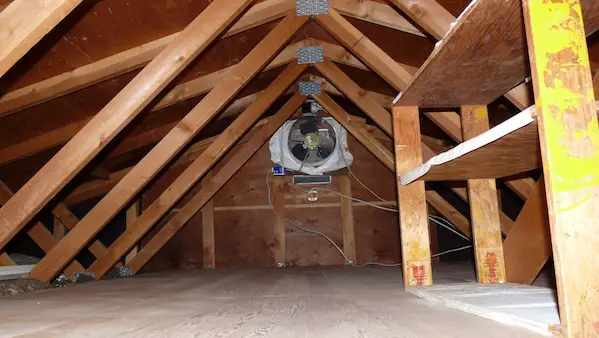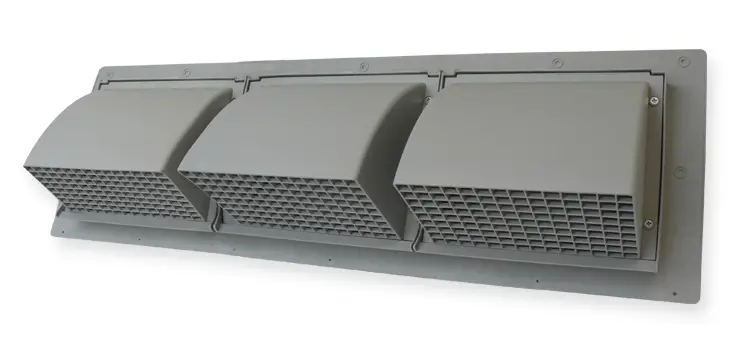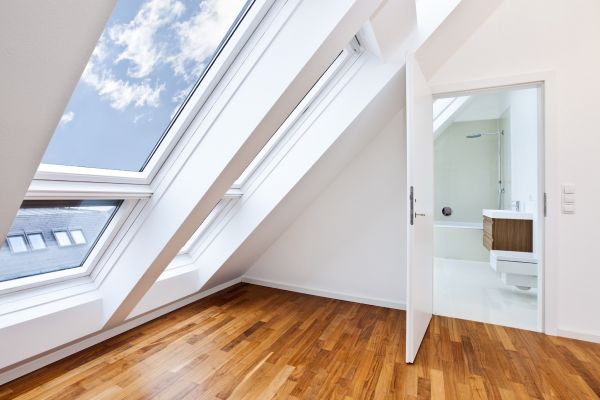Table of Contents
*This post may contain affiliate links. As an Amazon Associate we earn from qualifying purchases.
Proper attic ventilation is critical throughout the year, regardless of what kind of climate you live in. This is because attic ventilation helps move air through your house, which can be beneficial during cold weather or warm weather.
Proper attic ventilation can save you money on your monthly energy bill and reduceyour carbon footprint. Additionally, proper attic ventilation can make your home a more enjoyable place to inhabit by engendering a more pleasant temperature.
In this article, we discuss 6 projects that homeowners can initiate in order to improve their attic ventilation. Towards the end of the article, we offer our final thoughts on the future of attic ventilation.
Install A Whole HouseFan

Whole House fans used to be the primary way that homeowners ventilated attic spaces before modern HVAC (heating, ventilation, and air conditioning) systems were invented.
Many people install whole house fans on the ceiling between the attic and livingspace.
A necessary part of using a whole-house fan is to open windows. This is because whole house fans move air from open windows in the living space to the attic. This creates many air changes per hour, which allows homeowners to cool their home without having to turn on the HVAC system.
Many people prefer whole house fans because they distribute fresh air throughout the house, which can mimic the outdoor environment. Many people love the feel of outdoor air. Yet, in some locations, excessive heat can make it uncomfortable to spend significant time outside. Whole house fans can allow you to stay inside while still retaining some benefits of natural airflow.
Furthermore, since whole house fans allow you to turn off your HVAC system, they are also environmentally friendly. Many modern HVAC systems release greenhouse gasses into the atmosphere by burning fossil fuels. This can contribute to global warming and impact biodiversity on a planetary scale.
By using a whole-house fan to improve your attic ventilation, you can minimize the harmful effects of using your HVAC system.
Install A SolarPowered Attic Fan

During the summer months, attics can get so hot that some of this air is released back into the living space just below the attic. This can be frustrating if you frequently use these living spaces, as the temperature can easily be 5-10 degrees warmer than the rest of the house.
Furthermore, a warmer upstairs living space could negatively impact your life if you rely on a specific temperature. For example, many people like to farm plants like microgreensindoors. These plants need specific conditions that can be difficult tomanifest due to fluctuating house temperatures.
Additionally, some parents worry that excessive heat in upstairs living spaces could impact their children. For example, imagine a parent who puts their infant to sleep only to return 2 hours later to find the temperature 10 degrees warmer. Ultimately, this could impact the health of your child.
Luckily, solar powered attic fans allow homeowners to cool upstairs living spaces without experiencing some of the negative consequences of whole house fans. Since whole house fans draw significant amounts of air into the house, some homeowners worry that these fans will pull gases from combustion appliances into the house, like carbon monoxide.
You don’t have to worry about this with solar powered attic fans. These fans pull less air into your house, meaning there is less risk of distributing toxic gases.
You can install solar powered attic fans yourself, though they require cutting holes in your roof. If you are familiar with this kind of action, then installing a solar powered attic fan shouldn’t be that difficult. If you don’t have any experience cutting holes in your roof, then we recommend enlisting the help of a professional.
Just keep in mind that solar powered attic fans can cost well over $500 per fan. Many homeowners need at least 2 of these fans in order to be effective. Installation costs usually range from $75-100 per hour of labor.
Despite these costs, solar powered fans are much better for the environment since they run on a renewable resource. This help offset some of the initial costs of installing them, as your HVAC system has to work less hard in order to keep your house cool.
Add More Intake AndExhaust Vents

Another thing you can do to improve your attic ventilation is to simply add more intake and exhaust vents to your house.
One of the most popular vents to add your house is a soffit vent. These vents are featured beneath the eaves on your house.
Soffit vents are ideal both for the cold weather and warm weather. During cold weather, soffit vents push out hot air that can accumulate just below your roof. This hot air can melt ice on your roof, which can then run down the roof and refreeze, creating ice dams. These dams trap water, which can then seep in beneath your roof shingles and damage your house.
By installing a soffit vent, you will keep your entire roof cold so that ice dams don’t form.
Remove Debris FromYour Roof

Even if you install soffit vents, these can become ineffective over time if debris accumulates and blocks air from entering and exiting.
This happens often after inclement weather, especially if your yard features many trees that tower over your roof.
The best way of cleaning soffit vents is to use compressed air to blow out any debris. Some people recommend doing this annually to prevent any major accumulations. Yet, even that level of frequency could be risky. Many experts recommend cleaning your soffit vents every season or even after every major storm.
When soffit vents are blocked, your attic has a difficult time taking in outside air and pushing out warm attic air. This results in a congested attic which will trickle down and influence your living space.
When soffit vents are not blocked by debris, they improve your attic ventilation. This extends the life of your roof shingles, reduces your energy bill, prevents mold and mildew buildup, and prevents ice dams.
Hire a Professional to Inspect your House
Many homeowners aren’t content with improving their attic ventilation on their own terms. Relying on the knowledge of an expert can reduce your stress and also save you money.
Some homeowners try to install their own vents but end up doing a poor job. This could actually have a counterintuitive effect, as poorly installed vents could block up air and result in an inefficiently ventilated attic. This could result in higher energy costs and even toxic chemicals being filtered into your home.
In this sense, many homeowners who are not savvy when it comes to DIY projects would benefit from getting a home inspection. Usually, these are performed when you are buying a house for the first time. But, specialized roof inspections can also be arranged in order to analyze the status of your attic ventilation.
Many homeowners choose to get a roof inspection every couple of years to ensure that their attic ventilation is still effective. This is critical if you live in a volatile area with inclement weather. Getting your roof regularly inspected can prevent some of the catastrophic events that can occur when we are negligent with regards to attic ventilation.
If your attic is poorly ventilated, it shouldn’t be difficult to determine this on your own. The temperature in and around your attic will be different than the rest of the house. Also, there will likely be excess moisture and mold growing.
Yet, this doesn’t mean you shouldn’t get your attic inspected. A professional can provide a deeper level of analysis as to why your attic ventilation is compromised and what solution to take.
Our Final ThoughtsOn Attic Ventilation

We think there are many ways to improve your attic ventilation, though these can be tricky to implement if you are a new homeowner.
We recommend enlisting the help of an expert if you notice any negative consequences associated with your house’s attic ventilation. In some cases, a simple solution can be sought. However, many homeowners hire a professional to install more vents or some kind of fan system.
Alternatively, sometimes the problem is merely a matter of debris. Depending on where this debris is, you may be able to get away with using compressed air to remove it.
On a deeper level, we think attic ventilation will be critical in the future, as homeownerswill seek a way of regulating their house’s temperature using sustainable methods. Most modern HVAC systems rely on nonrenewable resources, which can harm the environment.
We think the future of attic ventilation lies in using renewable energies like solar power and wind power. Both of these are already used to improve attic ventilation through devices like solar power attic fans and wind turbines.
We think these devices will become more affordable over time, as they are currently quite expensive.
Regardless of how the future pans out, it’s important to appreciate the technology we dohave. Even if our attic ventilation is compromised, we still have a roof over our head, and that’s a cause for celebration.

